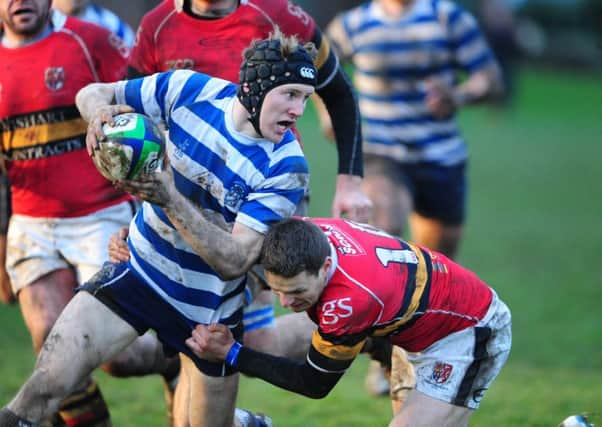Experts call for all rugby players to wear headguards as impact cut by 47%


A team from the University of Dundee’s Institute of Motion Analysis & Research (IMAR) has called for the wearing of headguards to become mandatory at all levels of the game after finding that some mainstream products mitigated impact levels on the head by up to 47 per cent.
The findings, published by the British Medical Journal, found that even the least effective device tested could make a significant difference in preventing head injuries, such as concussion.
Advertisement
Hide AdAdvertisement
Hide AdProf Rami Abboud, director of IMAR, said that the study made a compelling case for players to be made to wear protective headgear at both amateur and professional grades.
He said: “The issue of head injuries in rugby, such as concussion, has become increasingly prevalent in recent years, with players often exposed to extreme forces, particularly at the professional level of the game. You cannot avoid injuries in contact sport and we are not saying headgear would eradicate head injuries, but this research has shown just how significant a difference these products can make in helping to minimise the risk players face on the field.
“You don’t want to go as far as American Football with its hard helmets, which takes away from the essence of what rugby is, but there is a need for common sense to help minimise head injuries.”
Mid-priced (£24.99-£42.00) products from seven manufacturers were selected for the trial, with the devices exposed to drop tests producing forces of more than 103 g, the closest acceleration to the upper limit of the proposed concussion threshold of 100g.
While each of the tested devices demonstrated a significant decrease in the force placed on the head, Canterbury’s Ventilator was found to be the most effective, decreasing the impact force on average by 47 per cent.
James Robson, chief medical officer for Scottish Rugby, said: “This is an illuminating piece of research which re-opens the debate regarding the use of headguards in contact sport, particularly rugby.
“We will look more closely at where this leads in terms of head protection and possible concussion risk management.”
Final year medicine student Erin Frizzell, the study’s lead author, said she had been surprised at the effectiveness of all of the products tested. She added: “Across the range the effectiveness was greater than I thought it would be.”